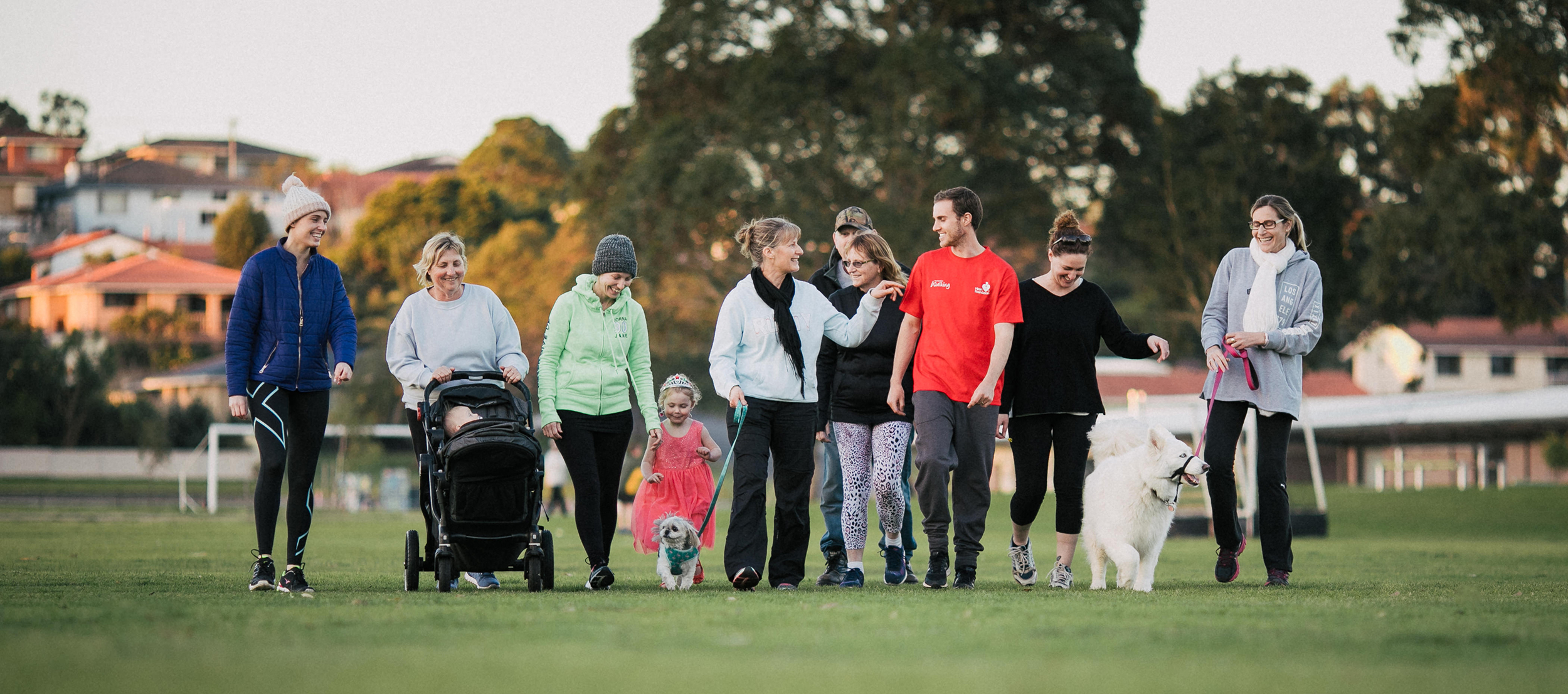
General walking tips
Walking is an excellent form of exercise for people of all ages and abilities. If you're just getting back into exercise, you should start your walking program gradually. Here are some tips on how to get started and how to prepare for walking.
Seek appropriate medical advice
If you have a medical condition and/or you are significantly increasing your level of activity by undertaking Heart Foundation Walking activities, you must ask your health professional whether it is safe for you to participate.
Manage medical conditions carefully
If you have a medical condition that could be affected by activity (like heart disease, angina, high blood pressure, diabetes or asthma), you must carefully monitor any symptoms (e.g. breathlessness, low blood sugar or pain) that may be made worse. If you are on medication for your condition, ensure you have taken your medication correctly before undertaking activity and/or carry as appropriate (discuss this with your doctor), and walk at your own pace, being careful not to overdo it.
Warm-up and stretch
A gentle warm-up and some simple stretching is a good way to improve flexibility, prepare muscles for being active and prevent injuries. You might like to consider including a warm-up and stretch at the start of every walk and, when possible, at the end.
Build activity slowly
If you rarely do any physical activity e.g. walk the dog once a week, or play an occasional game of golf, start by walking for 10 or 15 minutes, three or four times a week at a comfortable level. After a few weeks, you should find that you can walk a little further and faster, and may want to gradually increase the frequency to five, six or seven times a week.
Use the correct technique
Walk at a steady pace, swing your arms freely and stand as straight as you can. Your feet should step in a rolling action from the heel to the toe.
Listen to your body
A good way to judge how fast to walk is to rate how you feel on a scale of 0 to 10 (where 0 is resting and 10 is working very, very hard). To get a health benefit without pushing yourself too hard, your walking should be somewhere between three (moderate) and six (somewhat hard). Stop if you need to.
Walk at your own pace
Many Heart Foundation Walking groups include a shorter alternative route for slower or less fit Walkers. Take advantage of this if you need to. Remember to always walk at your own pace – it’s not a race.
Shoes and socks
Wear thick comfortable cotton socks. Sensible, comfortable and lightweight shoes with support are best.
Prepare for the weather
Wear suitable warm, light clothing in the winter and cool, comfortable clothes in the summer. Remember to wear suitable sun protection, including a hat, sunscreen and sunglasses. Check the UV index and consider walking in shady areas or undercover to reduce exposure to UV radiation.
Stay hydrated
Drink water before and after your walk. Take water with you on your walk, especially in warm weather.
Cool down
Make sure you cool down after a long fast walk. Do a few stretching exercises
Know the warning signs of a heart attack
It is important that all Walkers know the warning signs of heart attack and the action to take if anyone in your group is experiencing warning signs.
With heart attacks, every minute counts. The sooner you recognise the warning signs and call Triple Zero (000), the less damage is done to the heart muscle and the greater the chance of survival.
The warning signs of heart attack
-
Discomfort or pain in the centre of your chest: heaviness, tightness or pressure; the discomfort may spread.
-
Discomfort in other parts of your upper body - arm/s, shoulder/s, neck, jaw or back.
-
You may also feel short of breath, nauseous, a cold sweat, dizzy or light-headed.
-
Someone having a heart attack may: appear pale; look like they are having trouble breathing; look uncomfortable; be sweating a lot.
What to do
-
STOP and rest now. Help the person to immediately stop what they are doing and rest.
-
TALK tell someone how you feel. Ask the person to tell you what they are feeling.- If their symptoms are severe, get worse quickly or have lasted for 10 minutes.
-
CALL Triple Zero (000) now! Chew 300mg aspirin, unless you have an allergy to aspirin or your doctor has told you not to take it. Ask for an ambulance. Don’t hang up. Wait for the operator’s instructions.
Warming up, stretching & strength
Before setting off with your group take about five minutes to allow circulation to increase gradually and muscles to warm up; a light sweat is a good indication your body is warm. It’s a great idea to also take 5 minutes at the end of each walk to cool down.
You and your group can warm up or cool down by walking on the spot or walking slowly for five minutes at both the start and end of your walk. Or, some people warm up by walking from home to the meeting point for their walk and cool down by walking home from the walk.
We've developed the following stretch and strength posters to support older Australians to stay fit and active, whilst helping to enhance understanding of the benefits of regular physical activity. Feel free to download and use at your discretion.
Mindful Walking
The practice of mindful walking is the opportunity to give ourselves a bit of a break from the constant mental chatter.
We have engaged mindfulness expert Marike Knight from Cool Karma Collected, a Modern School for Mindfulness. Check out our Mindful Walking page, full of tips on Mindful Walking!
